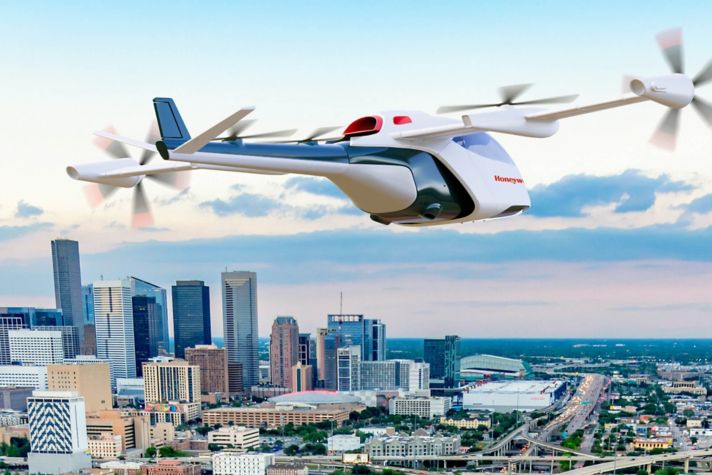-
 Global
Global-
Africa
-
Asia Pacific
-
Europe
-
Latin America
-
Middle East
-
North America
- |
- BUSINESSES
- |
- Contact
- |
-
 Global
Global-
Africa
-
Asia Pacific
-
Europe
-
Latin America
-
Middle East
-
North America
- |
- BUSINESSES
- |
- Contact
- |
You are browsing the product catalog for
- News
- A Glossary for the Urban Air Mobility Future
A Glossary for the Urban Air Mobility Future
Terms to know for the advent of air taxis and automated, electric aircraft
The advent of on-demand transportation flying over traffic and terrain is changing how we think about getting from point A to point B.
The emerging world of urban air mobility (UAM) will make transportation more efficient while launching an entirely new sector of the aerospace industry.
Technology being developed today — by the world’s largest aerospace manufacturers and by innovative startups — is making air taxis, drone delivery, and all-electric, autonomous flight a reality.
This new industry already encompasses many evolving concepts and subsectors. Here are some important terms to know as this technology takes us to new heights.
Autonomous flight: Refers to aircraft that are capable of sensing, deciding, and acting with greater autonomy through all phases of flight, from takeoff to landing.
Urban air mobility (UAM): This emerging field of aviation and aerospace centers on developing aircraft and infrastructure to transport people over urban environments on demand. Advancements in battery technology, distributed electric propulsion and automation are driving innovation in this field.
Advanced air mobility (AAM): Expanding on these concepts, advanced air mobility envisions use cases beyond urban environments, including regional city pairs, public services, emergency response and cargo delivery.
Electric vertical takeoff and landing (eVTOL): The technology behind most advanced air mobility vehicles is eVTOL. Aircraft typically use rotors to take off vertically. Then those rotors either mechanically shift in place for fixed-wing cruising flight or another propulsion system takes over.
Uncrewed aerial vehicles (UAVs): Also known as unmanned aerial vehicles or drones, UAVs are often remotely piloted aircraft used for aerial photography and surveillance, firefighting, military applications, insurance adjusting and crop spraying. Larger UAVs are currently in development for cargo and package delivery.
Uncrewed aerial systems (UAS): A term often used in the aerospace industry, by the United States military and the Federal Aviation Administration, "uncrewed aerial system" emphasizes elements in addition to the aircraft, including data links, control stations, remote pilots on the ground and other systems.
Fly-by-wire system: All-electric vehicles, both for urban air mobility and UAVs, require ultralight systems. These advanced aircraft, like modern airliners, are controlled with a fly-by-wire system — essentially the brains of the aircraft. Although conventional control systems are heavier and draw considerable power, Honeywell engineers have developed a compact fly-by-wire system about the size of a paperback book, while eliminating the need for heavy hydraulics, improving safety and drawing less power.
Beyond visual line of sight (BVLOS): Detect-and-avoid is a key component of beyond visual line of sight operations. Drones equipped with BVLOS technology can fly farther and carry more weight, with less human intervention. Urban air mobility vehicles also will need highly advanced detect-and-avoid systems to operate beyond the visual line-of-sight of their remote pilots — and, eventually, to operate autonomously.
Detect-and-avoid: To fly safely, autonomous aircraft will need to detect airborne traffic and decide on a course of action to safely maneuver around it. This detect-and-avoid capability is extremely complex in the air. To test the Honeywell IntuVue RDR-84K radar’s detect-and-avoid abilities, our engineers flew two quadcopter drones at each other over the desert. In multiple flights, the aircraft detected the other’s flight path and calculated a maneuver to safely avoid it.
Simplified vehicle operations (SVO): A concept where a pilot onboard supervises flight operations and intervenes only as needed. Once the flying public becomes comfortable with automation, it will be possible to take the pilot offboard and put them in an operations center to supervise the aircraft remotely.
Learn more about the latest innovations in urban air mobility and UAVs, and meet a Futureshaper who's building avionics and systems to power this new category of aircraft.
Copyright © 2024 Honeywell International Inc.




